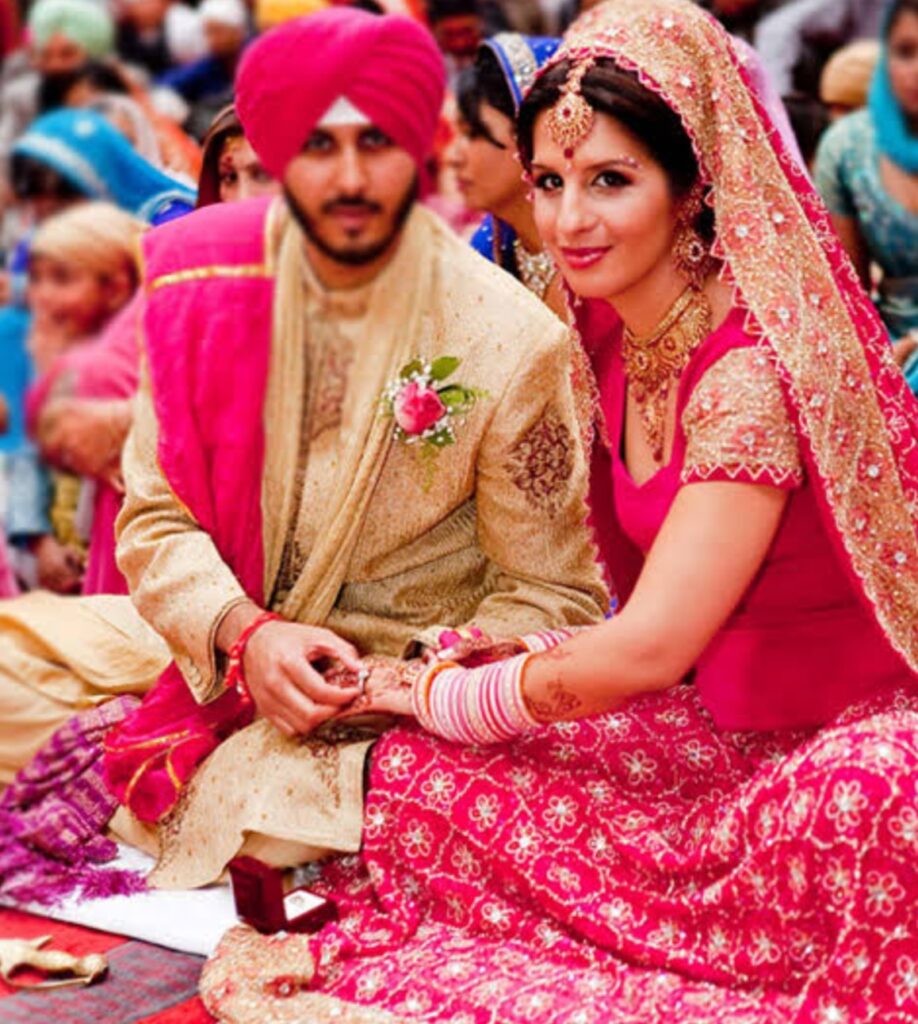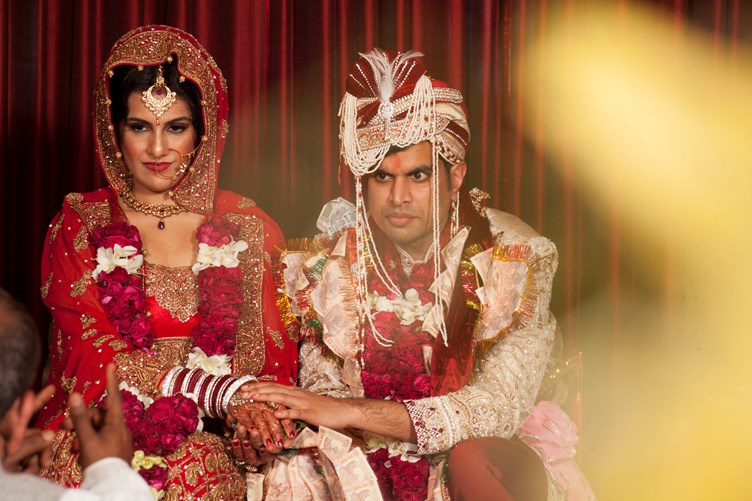Khatri wedding traditions are a vibrant blend of cultural heritage, familial bonds, and joyous celebrations. Rooted in the northern regions of India, particularly Punjab, Delhi, and Uttar Pradesh, these ceremonies are not just about the union of two individuals but the coming together of families and communities. Each ritual, steeped in history and symbolism, adds depth and meaning to the matrimonial journey.

1. Roka -The Inception of a Sacred Bond
The Roka is the very first official step in a Khatri wedding. It’s the moment when both families meet and agree that the bride and groom are perfect for each other. The groom’s family visits the bride’s home, bringing sweets, gifts, and lots of love.
There is no religious ritual here — just a heartfelt gathering that says, “Yes, we’re ready to move forward together.” This ceremony creates a strong bond between the two families, setting the tone for all the celebrations to come.
2. Chunri Ceremony – Embracing the Bride into the Groom's Family
This beautiful tradition shows how the bride is lovingly accepted by the groom’s family. They visit her home with gifts like sweets, clothes, bangles, jewelry — and most importantly, a bright red chunri (a traditional scarf or dupatta).
The chunri is gently placed over the bride’s head as a symbol of love, honor, and welcome. This moment is full of blessings and smiles, as the groom’s family shows their respect and affection for their future daughter-in-law.

3.Sagaai (Engagement) – Pledging Commitment and Love
The engagement, also known as Sagai or Mangni, is a joyful event where the bride and groom exchange rings in front of their families and friends. It’s a way of making the relationship official and public.
The couple also receives blessings, and both families may exchange gifts. The event usually includes music, dancing, and a delicious spread of food. It’s one of the happiest and most exciting parts of the pre-wedding journey.
4. Sangeet – The Musical Heart of Khatri Weddings
Sangeet is all about fun, laughter, and letting loose! Both families come together for an evening (or sometimes a full night) of dancing, singing, and enjoying each other’s company.
Traditionally, women from both sides sing old Punjabi wedding songs, while today many families prepare dance performances and hire DJs to get the party going. It’s a perfect way to celebrate love before the big day arrives.
5. Mehendi – Adorning Hands with Love and Tradition
The Mehendi ceremony takes place a day or two before the wedding. The bride sits surrounded by her female relatives and friends as a mehendi artist applies beautiful henna designs on her hands and feet.
These designs often include the groom’s name hidden in the patterns. Meanwhile, other women also get mehendi applied while singing songs, sharing stories, and enjoying snacks. It’s a relaxing yet festive event that everyone looks forward to.

6. Haldi (Seedhe Haath Tanni Kadai) – Purification and Blessings
The Haldi ceremony is a peaceful and emotional ritual. A paste made from turmeric (haldi), sandalwood, and rose water is gently applied to the bride and groom by their family members.
It’s believed that this paste brings a natural glow to their skin and also removes negative energy. The ritual is filled with laughter, teasing, and blessings, creating a warm and joyful atmosphere in both homes.
7. Chooda Ceremony – Symbolizing Marital Bliss
The Kalire ceremony is a special moment for the bride. Golden umbrella-shaped ornaments called kalire are tied to her bangles by her sisters and cousins. These symbolize blessings for a happy married life and a wish for her well-being in her new home.
After the kalire are tied, the bride shakes her hands over the heads of her unmarried friends. If a kalira falls on someone, it's believed they’ll get married next. It’s a fun tradition that brings smiles and laughter to everyone!
8. Sehrabandi and Ghodi Chadhna – The Groom's Regal Procession
The Baraat is the lively and loud arrival of the groom and his family at the wedding venue. The groom often comes on a horse or in a decorated car, while his friends and relatives dance around him with music, dhol beats, and lots of energy.
The bride’s family waits to welcome them with a traditional aarti and gifts. It’s like a mini party before the main wedding ceremony begins and is one of the most exciting parts of the day.
9. Wedding Ceremony – Hindu or Sikh Vows
The wedding ceremony can follow Hindu or Sikh traditions, depending on the family’s beliefs.
In a Hindu Khatri wedding, the bride and groom take seven rounds (pheras) around a holy fire. Each round represents a promise they make to each other — of love, respect, support, and companionship.
In a Sikh Khatri wedding, the ceremony is called Anand Karaj, where the couple walks around the Guru Granth Sahib (the Sikh holy book) while prayers and hymns are sung.
In both types of ceremonies, the couple is showered with blessings from elders and begins their journey as husband and wife.
10. Vidaai – An Emotional Farewell
The Vidaai is the final and most emotional part of the wedding. After the rituals are complete, the bride says goodbye to her parents and family. It’s a touching moment filled with hugs, tears, and love.
The bride often throws a handful of rice over her shoulder, symbolizing that she is leaving behind good fortune and blessings for her family. Then she departs with her husband, ready to start a new chapter of life.
How this information was collected
The Khatri wedding information shared here is not based on guesswork.
It comes from more than 30 years of deep research into Khatri communities across Lucknow, Delhi, Bohar, Punjab, and other parts of North India.
Respected pandits and senior members of the Khatri community have personally contributed by sharing authentic traditions and details.
Their experiences, combined with years of real-life observation, have helped collect and preserve these beautiful wedding rituals for future generations.
That’s why you can trust that everything you read here truly reflects the real beauty of Khatri weddings
Khatri weddings are more than just functions — they are full of love, family values, culture, and age-old traditions.
From the colorful Sangeet night to the emotional Vidaai, every moment is unforgettable.
These rituals are a beautiful part of the Punjabi and North Indian wedding traditions that continue to bring families and hearts together.
Which Khatri wedding ritual did you love the most?
Share your favorite in the comments below! We’d love to hear your thoughts


